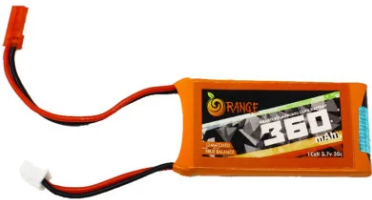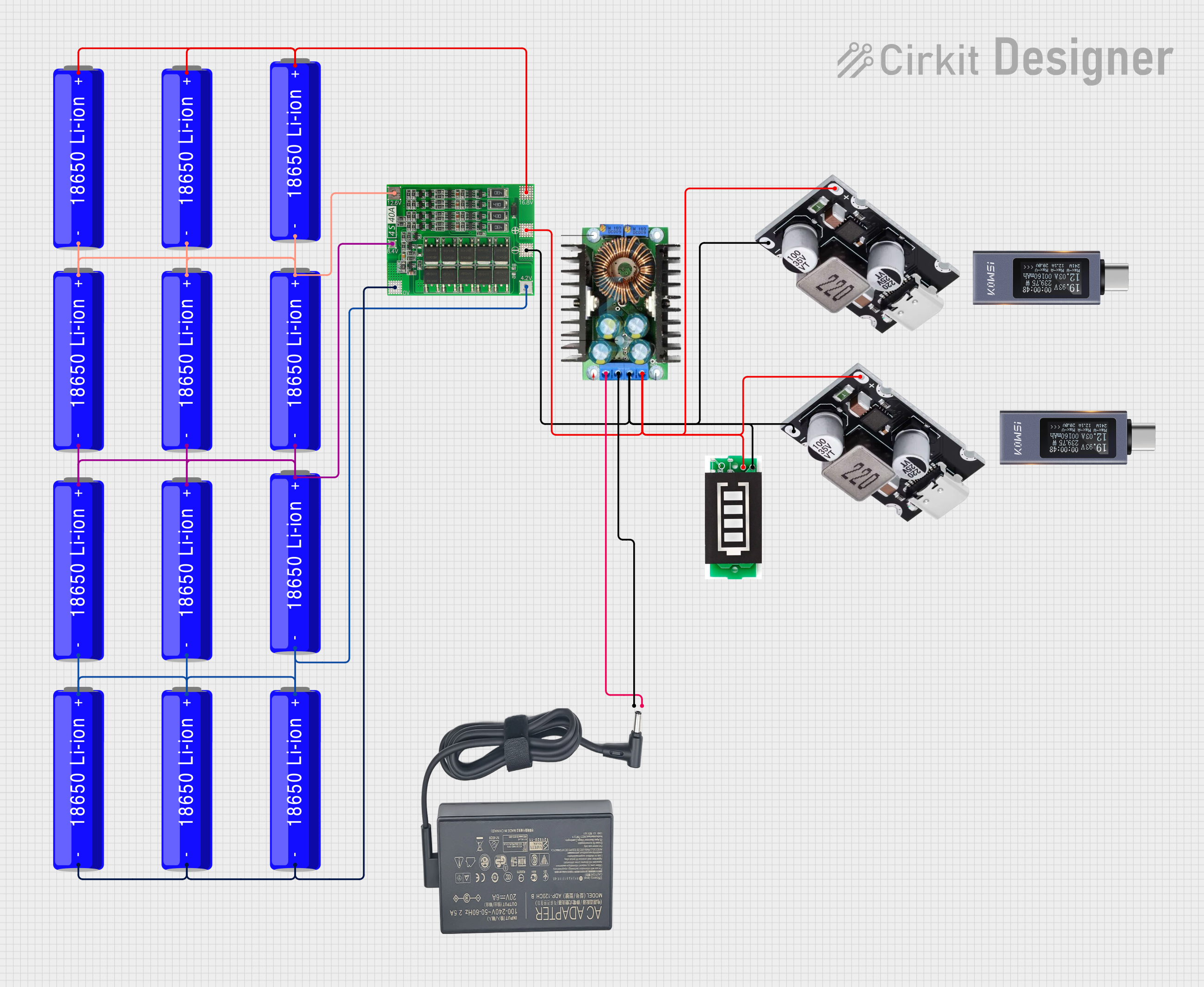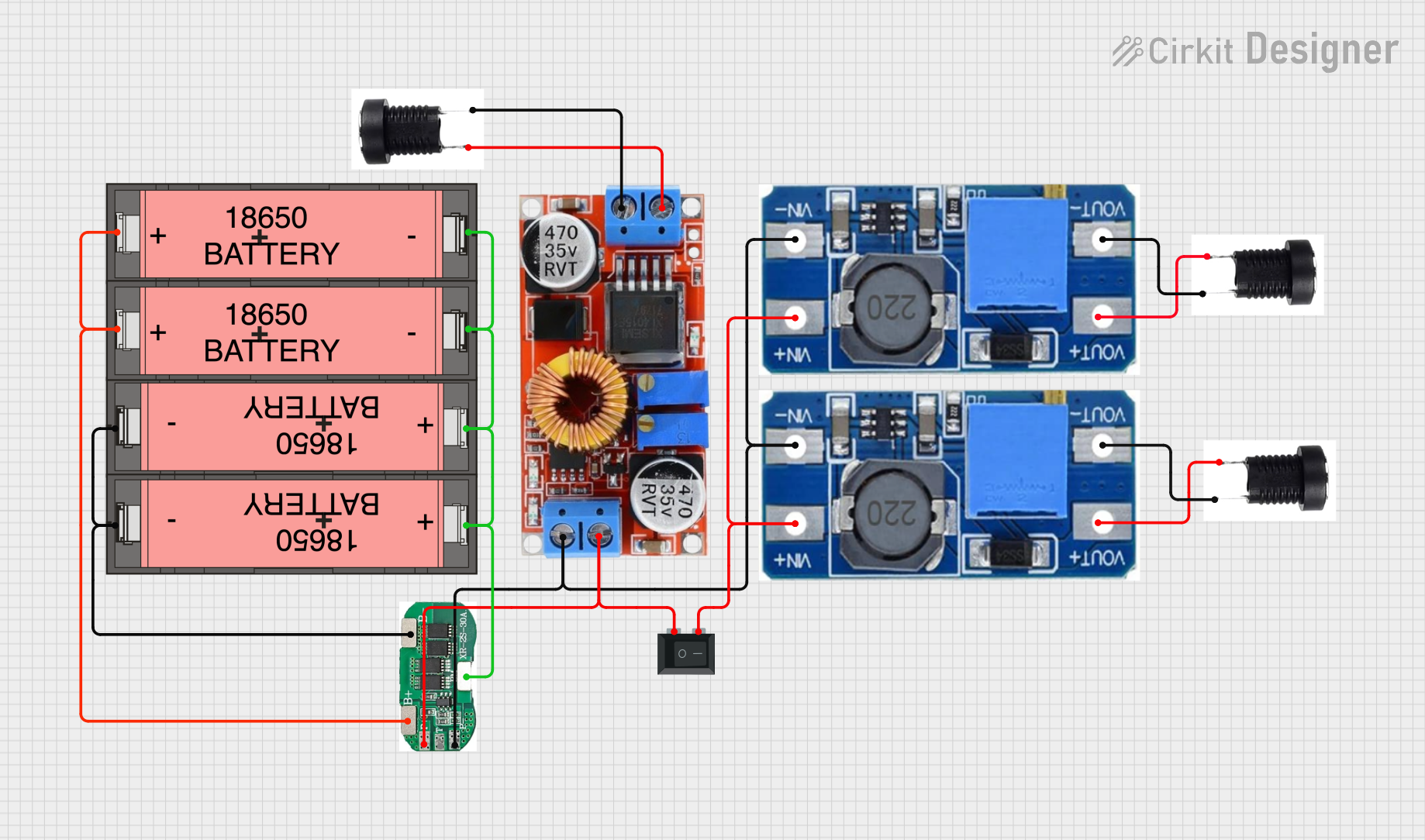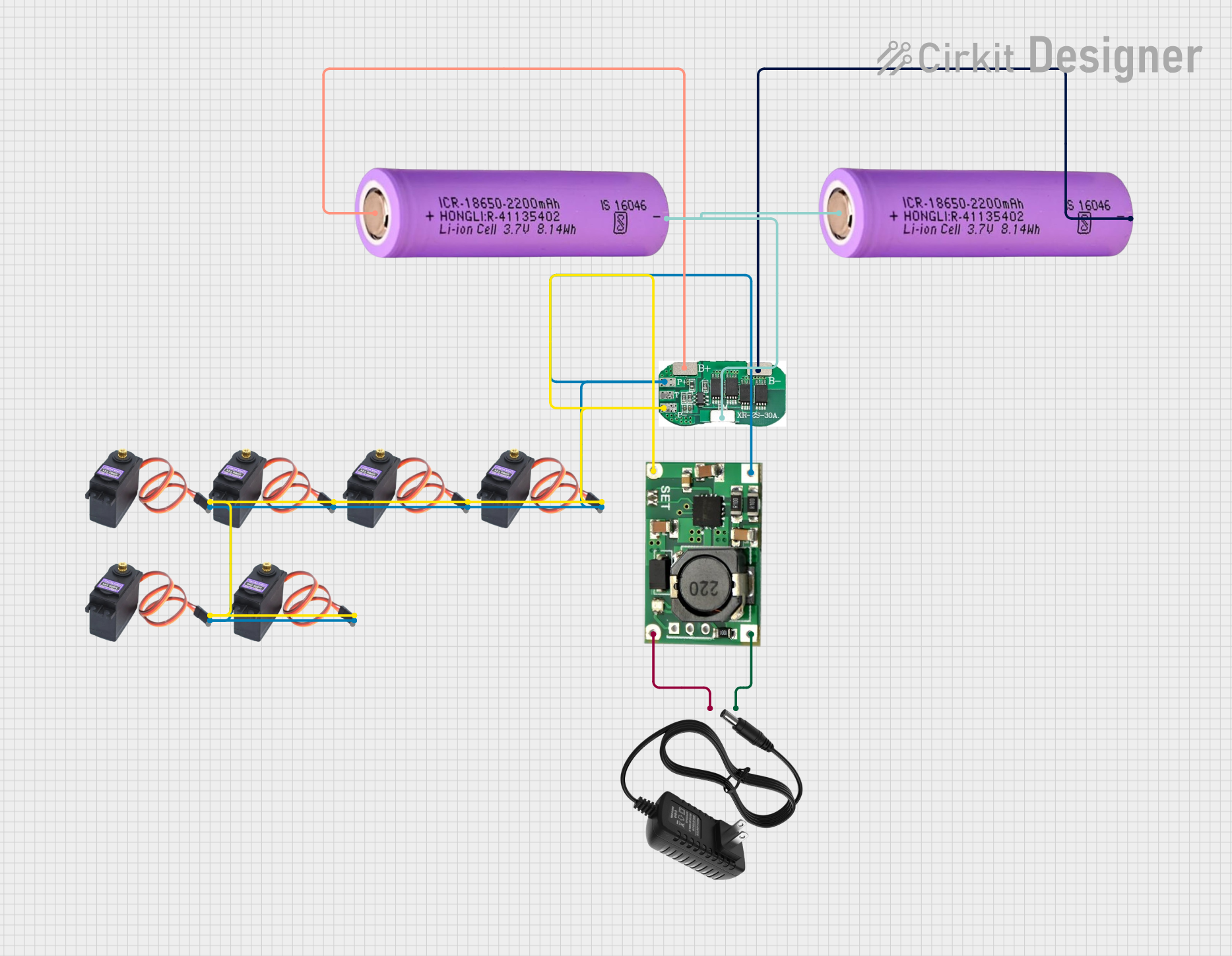
How to Use 1s 360mah 30C Lipo-Battery: Examples, Pinouts, and Specs

 Design with 1s 360mah 30C Lipo-Battery in Cirkit Designer
Design with 1s 360mah 30C Lipo-Battery in Cirkit DesignerIntroduction
The Orange 1S 360mAh 30C LiPo Battery is a high-performance, rechargeable single-cell lithium polymer (LiPo) battery. This battery is designed for use in a wide range of applications, including but not limited to RC drones, helicopters, micro quadcopters, and other small electric vehicles or projects requiring a compact power source.
Explore Projects Built with 1s 360mah 30C Lipo-Battery

 Open Project in Cirkit Designer
Open Project in Cirkit Designer
 Open Project in Cirkit Designer
Open Project in Cirkit Designer
 Open Project in Cirkit Designer
Open Project in Cirkit Designer
 Open Project in Cirkit Designer
Open Project in Cirkit DesignerExplore Projects Built with 1s 360mah 30C Lipo-Battery

 Open Project in Cirkit Designer
Open Project in Cirkit Designer
 Open Project in Cirkit Designer
Open Project in Cirkit Designer
 Open Project in Cirkit Designer
Open Project in Cirkit Designer
 Open Project in Cirkit Designer
Open Project in Cirkit DesignerCommon Applications and Use Cases
- RC Drones and Quadcopters
- Small RC Helicopters
- Portable Projects
- Micro Robotics
- Wearable Electronics
Technical Specifications
Key Technical Details
- Nominal Voltage: 3.7V
- Capacity: 360mAh
- Max Continuous Discharge Rate: 30C
- Max Burst Discharge Rate: 60C
- Charge Rate: 1C recommended, 2C maximum
- Connector Type: JST, Molex, or other (varies by model)
- Dimensions: Varies by model, typically around 25 x 20 x 10 mm
- Weight: Approximately 10g
Pin Configuration and Descriptions
| Pin No. | Description | Note |
|---|---|---|
| 1 | Positive (+) Lead | Red wire, connects to positive terminal |
| 2 | Negative (-) Lead | Black wire, connects to negative terminal |
Usage Instructions
How to Use the Component in a Circuit
- Initial Inspection: Before use, inspect the battery for any physical damage or swelling. Do not use if damaged.
- Charging: Use a LiPo-compatible charger. Set the charger to the 1S voltage level (3.7V) and a maximum charge rate of 1C (360mA).
- Connecting: Connect the battery to your circuit or device using the appropriate connector, ensuring correct polarity.
- Monitoring: During use, monitor the battery voltage to avoid over-discharging. Do not let the voltage drop below 3.0V per cell.
- Storage: Store the battery at approximately 3.8V per cell in a cool, dry place.
Important Considerations and Best Practices
- Charging Safety: Always charge in a fireproof location and never leave charging batteries unattended.
- Temperature: Operate and charge the battery within the temperature range of 0°C to 45°C.
- Disposal: Follow local regulations for disposal. Do not incinerate.
- Handling: Avoid puncturing, crushing, or subjecting the battery to severe shock or impact.
Troubleshooting and FAQs
Common Issues
- Battery won't charge: Ensure the charger is functioning and set correctly. Check the battery's voltage; if below 3.0V, it may be over-discharged.
- Reduced Runtime: This may indicate the battery is nearing the end of its life cycle or has been improperly maintained.
Solutions and Tips for Troubleshooting
- Battery Swelling: Discontinue use immediately. Swelling is a sign of overcharging, deep discharging, or damage.
- Voltage Drop: If the voltage drops quickly during use, the battery may be worn out or damaged. Replace if necessary.
FAQs
Q: Can I charge the battery faster than 1C? A: Charging at 1C is recommended for the longevity of the battery. A maximum of 2C can be used if necessary, but with increased risk.
Q: What should I do if the battery gets wet? A: Dry it thoroughly and inspect for damage before use. If in doubt, it's safer to replace the battery.
Q: How long will the battery last? A: Battery life depends on usage and maintenance. Typically, a LiPo battery lasts for 300-500 charge cycles.
Q: Can I use this battery with an Arduino UNO? A: Yes, but you will need a voltage regulator as the Arduino UNO requires a stable 5V supply.
Example Code for Arduino UNO
// This example demonstrates how to power an Arduino UNO with the LiPo battery.
// Note: A voltage regulator is required to step up the voltage to 5V.
#include <Arduino.h>
void setup() {
// Initialize digital pin LED_BUILTIN as an output.
pinMode(LED_BUILTIN, OUTPUT);
}
void loop() {
// Turn the LED on (HIGH is the voltage level)
digitalWrite(LED_BUILTIN, HIGH);
// Wait for a second
delay(1000);
// Turn the LED off by making the voltage LOW
digitalWrite(LED_BUILTIN, LOW);
// Wait for a second
delay(1000);
}
// Note: This code is for demonstration purposes only and does not include
// the necessary components for voltage regulation.
Note: The above code is a simple blink example and assumes that a voltage regulator is used to provide the correct voltage to the Arduino UNO. Always ensure that the power requirements of the Arduino and connected components are met and do not exceed the battery's specifications.